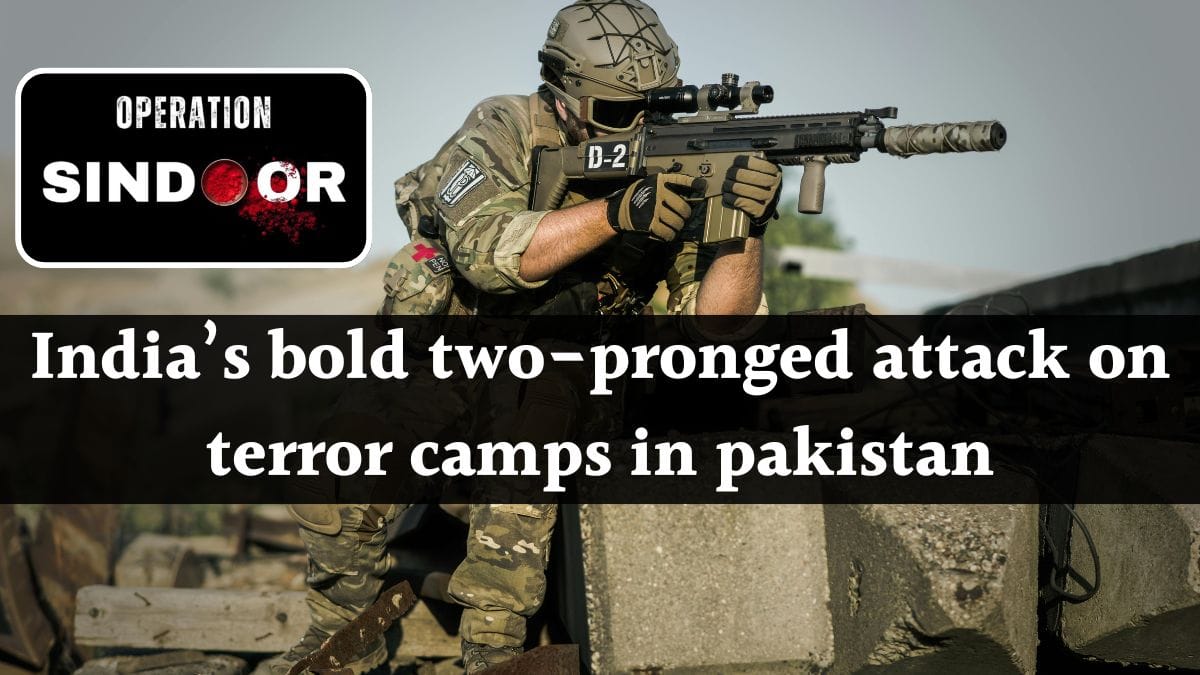
operation sindoor: india’s bold two-pronged attack on terror camps in pakistan
Operation Sindoor: India’s Strategic Response to Terrorism
On May 7, 2025, India launched Operation Sindoor, a significant military action targeting terrorist infrastructure in Pakistan and Pakistan-administered Kashmir. This operation was a direct response to the Pahalgam attack on April 22, where 26 Hindu tourists were killed in Indian-administered Kashmir. The Indian government attributed this attack to Pakistan-based militant groups, prompting a decisive military response.
The Pahalgam attack was a coordinated assault on a group of Hindu tourists in the scenic region of Pahalgam, Jammu and Kashmir. The attack resulted in 26 fatalities and was claimed by the Resistance Front, an offshoot of the Pakistan-based Lashkar-e-Taiba. This incident marked one of the deadliest attacks on Indian civilians in recent years and escalated tensions between India and Pakistan.
Planning and Execution of Operation Sindoor
In the wake of the Pahalgam attack, the Indian government initiated Operation Sindoor. The operation’s name, “Sindoor,” symbolizes the red powder worn by married Hindu women, reflecting the loss suffered by the victims’ families.
The Indian Air Force conducted precision strikes on nine locations identified as terrorist infrastructure. These sites included areas in Bahawalpur, Muridke, Muzaffarabad, and Kotli, known to host facilities of groups like Jaish-e-Mohammed and Lashkar-e-Taiba. The operation lasted approximately 23 minutes and involved the use of advanced weaponry, including SCALP missiles and AASM Hammer bombs deployed from Rafale jets.
Immediate Aftermath and Casualties
India reported that the strikes successfully targeted terrorist camps without causing civilian casualties. However, Pakistan contested this claim, stating that the attacks resulted in the deaths of 31 civilians and injuries to 46 others. Among the deceased were reportedly family members of Jaish-e-Mohammed leader Masood Azhar.
In retaliation, Pakistan claimed to have shot down five Indian aircraft, a claim disputed by India. Cross-border artillery exchanges ensued, leading to additional civilian casualties on both sides and further escalating tensions.
International Reactions and Diplomatic Efforts
The international community expressed concern over the escalating conflict between the two nuclear-armed neighbors. The United Nations, United States, United Kingdom, China, and other nations called for restraint and urged both countries to engage in diplomatic dialogue to prevent further escalation.
Despite these calls, both India and Pakistan maintained firm stances. Indian officials emphasized the operation’s focus on eliminating terrorist threats, while Pakistani leaders condemned the strikes as acts of aggression and vowed to respond accordingly.
Impact on Civilians and Regional Stability
The conflict’s escalation had significant repercussions for civilians in the affected regions. In Indian-administered Kashmir, areas like Poonch experienced heavy shelling, leading to mass evacuations and disruptions to daily life. Similarly, Pakistani regions targeted in the strikes faced destruction and loss of life, contributing to a humanitarian crisis.
The heightened tensions also disrupted economic activities and air travel in both countries, with several international flights being canceled and markets reacting negatively to the instability.
Conclusion
Operation Sindoor represents a critical juncture in India-Pakistan relations, highlighting the challenges of addressing cross-border terrorism while maintaining regional stability. The operation underscores India’s commitment to combating terrorism and protecting its citizens, while also illustrating the complexities of engaging with a neighboring country accused of harboring militant groups.
- Read More :- Gold and Silver Price Drop Today: What’s Happening in the Market and What You Should Know
As the situation continues to evolve, the international community’s role in facilitating dialogue and de-escalation remains crucial. The path forward will require careful navigation of diplomatic channels, a commitment to peace, and a concerted effort to address the root causes of conflict in the region.









